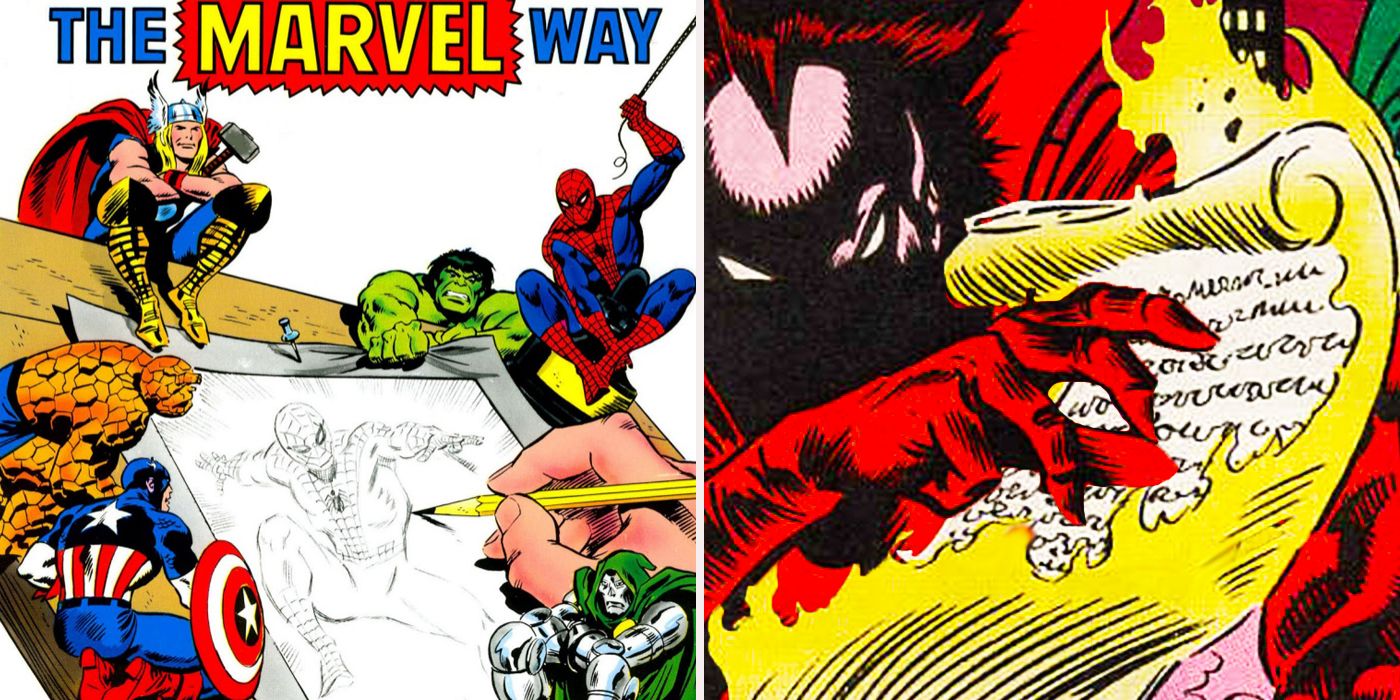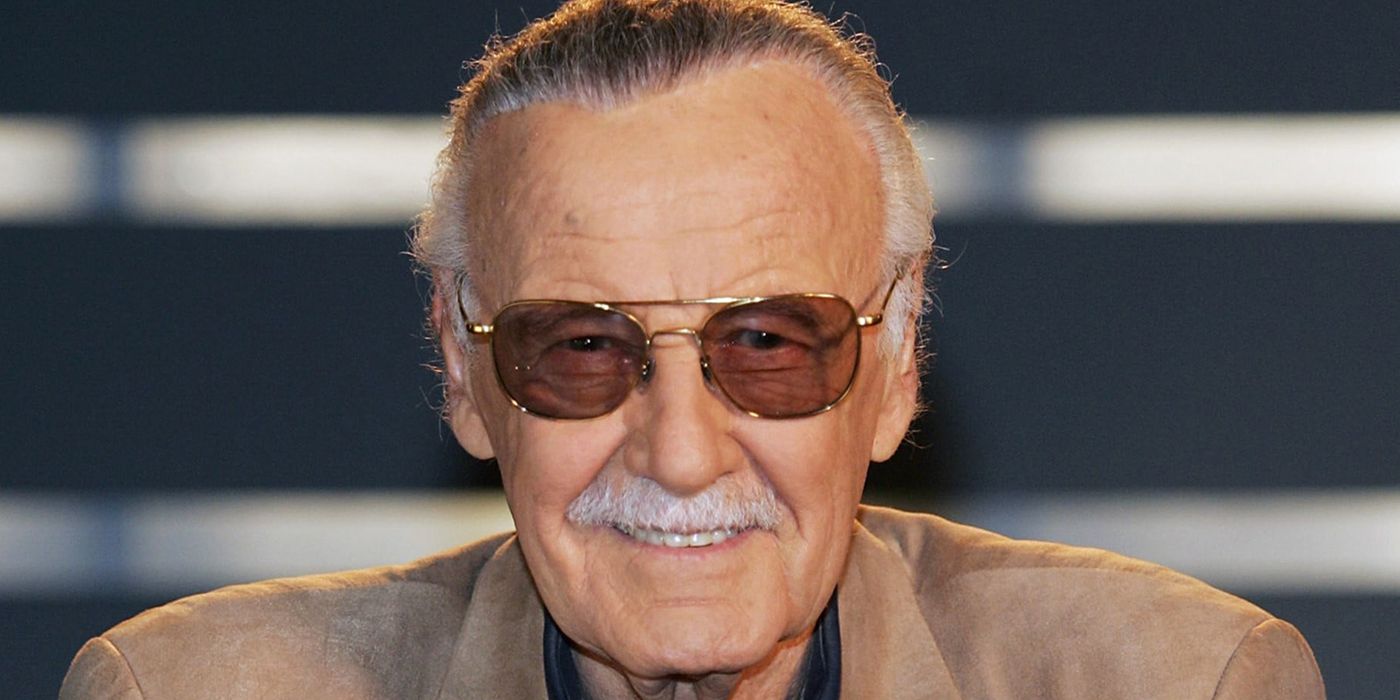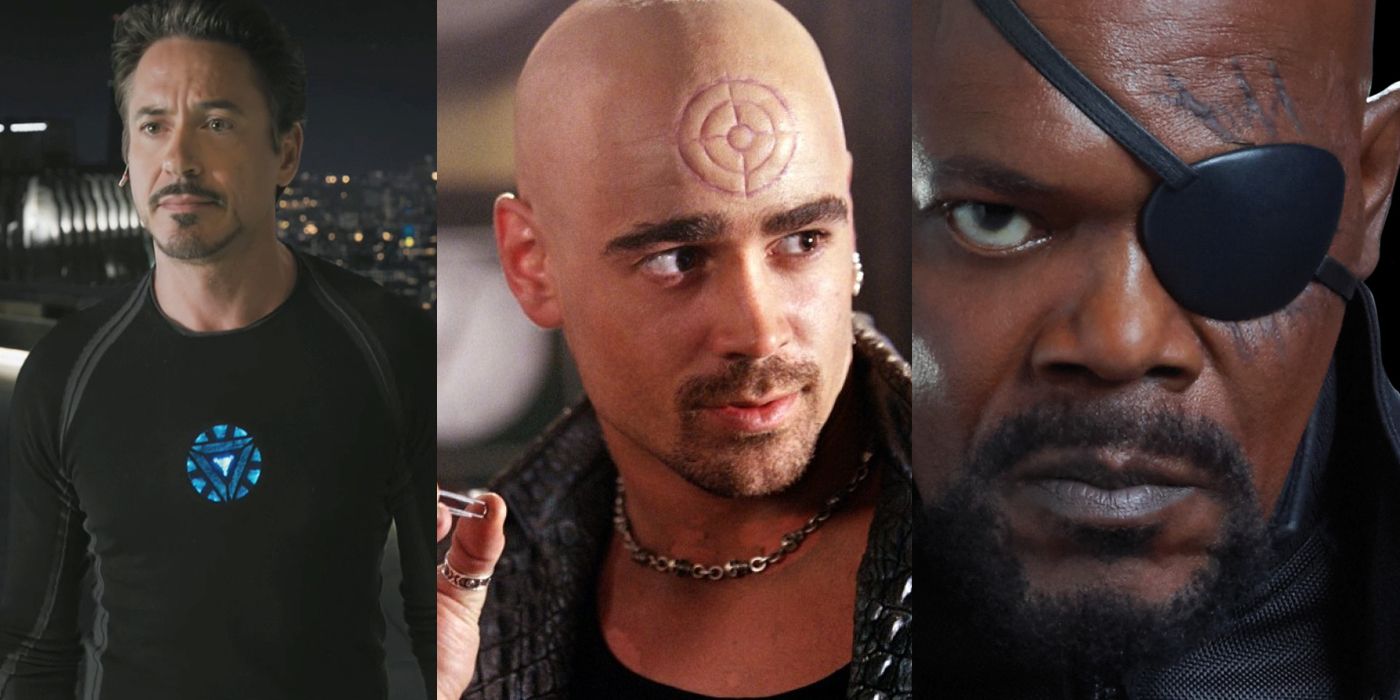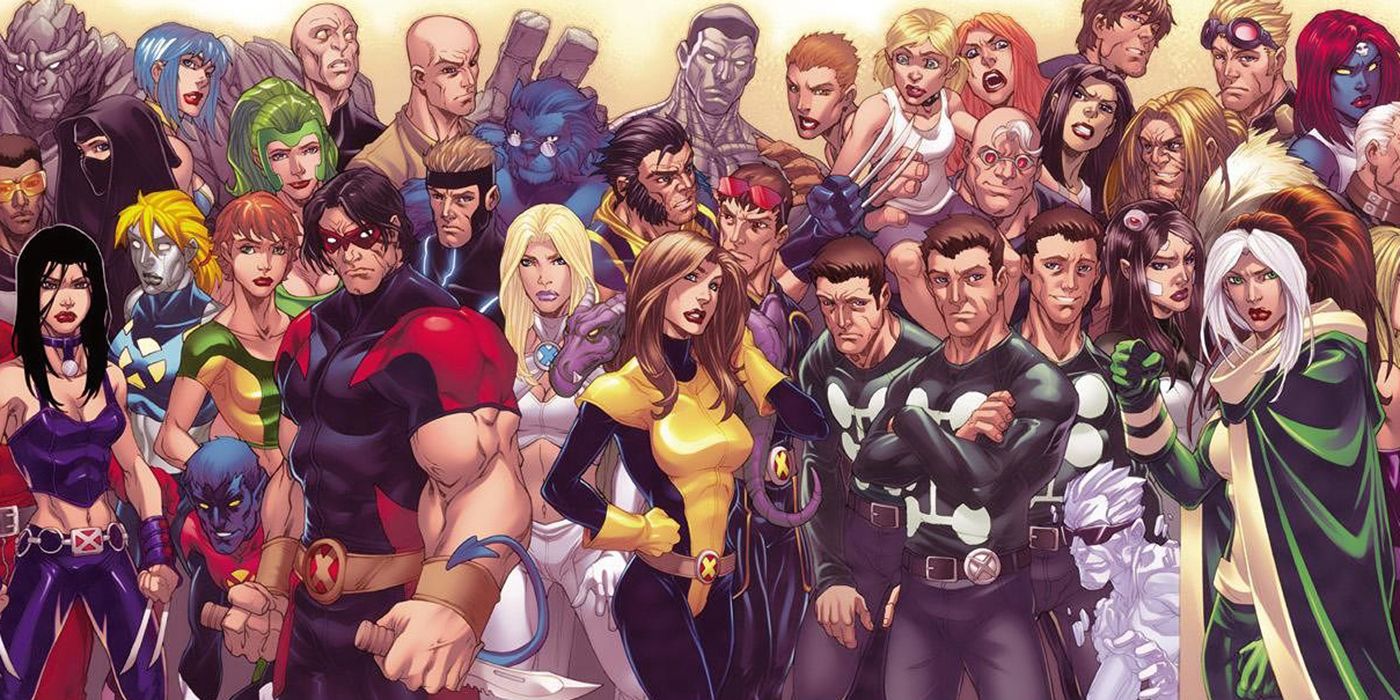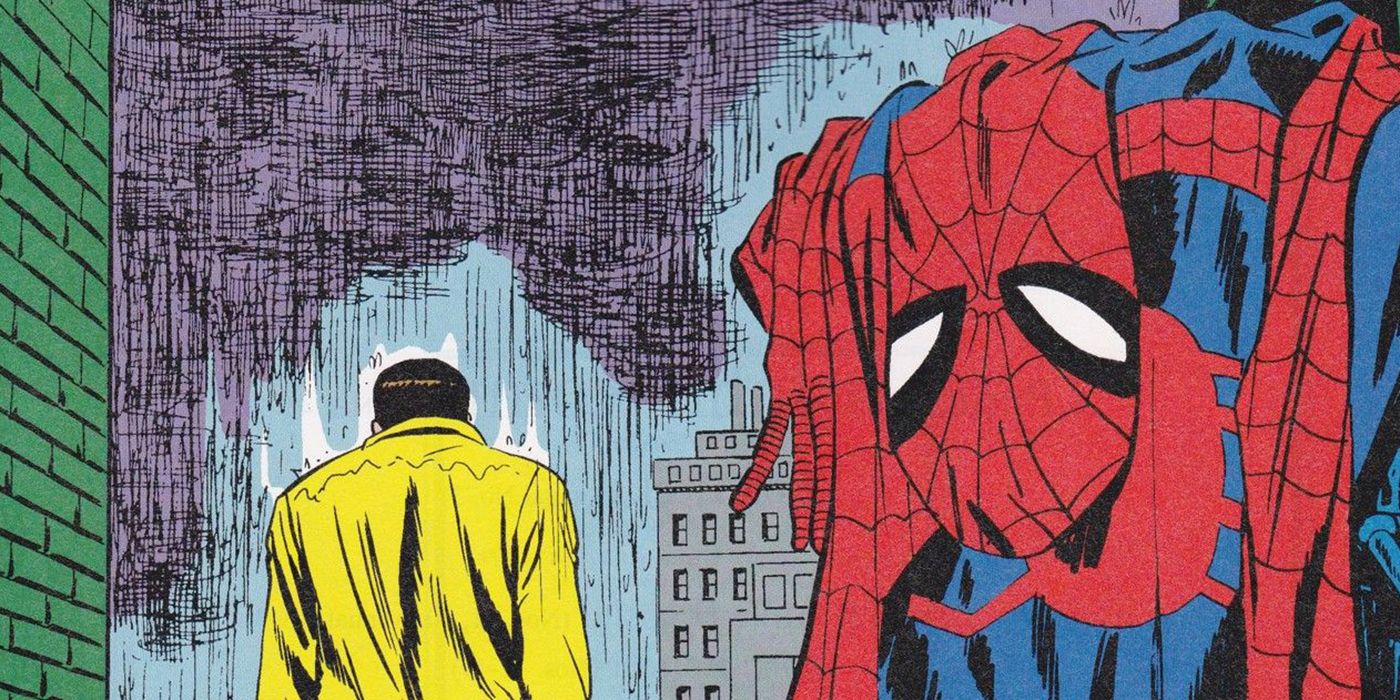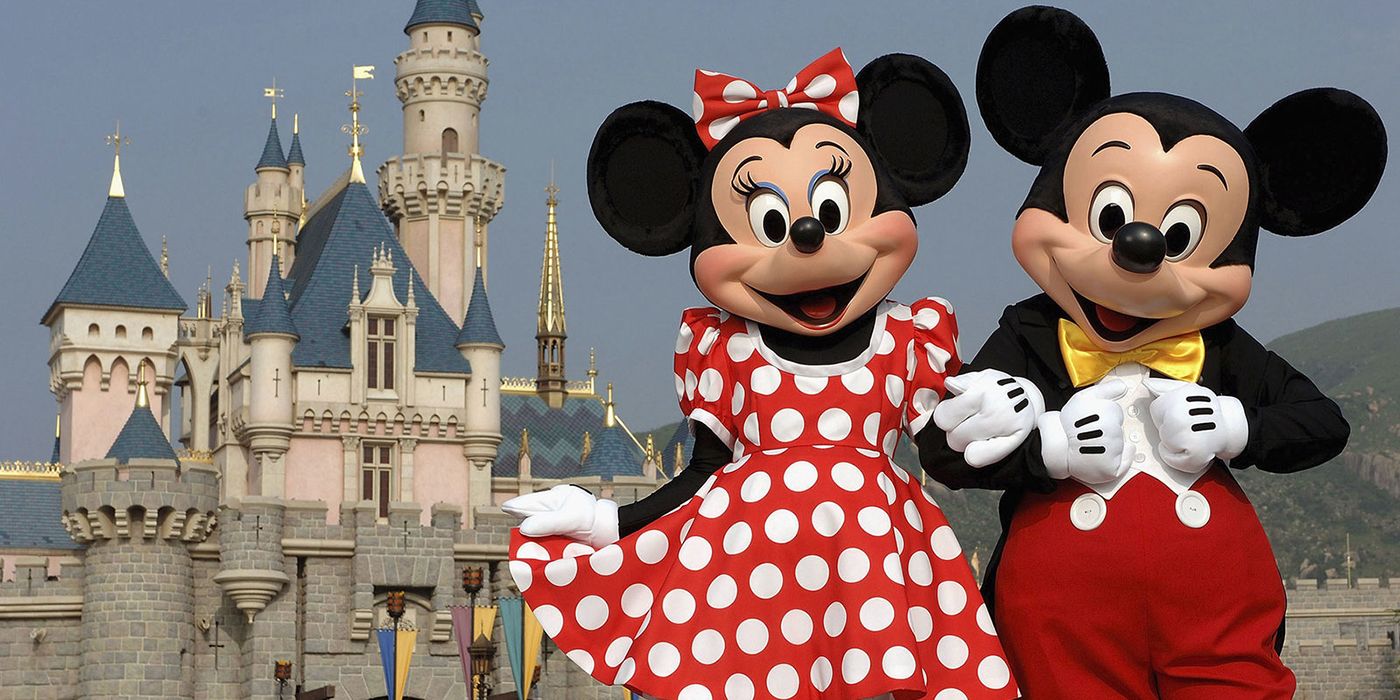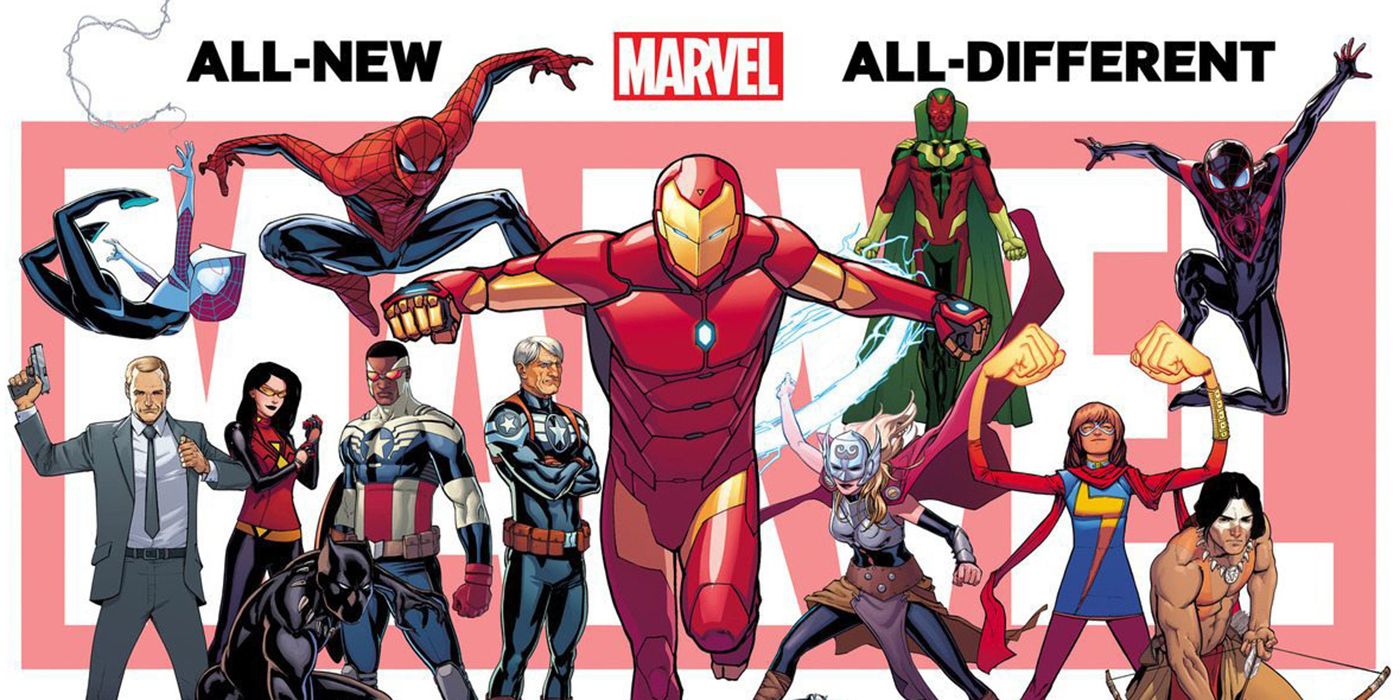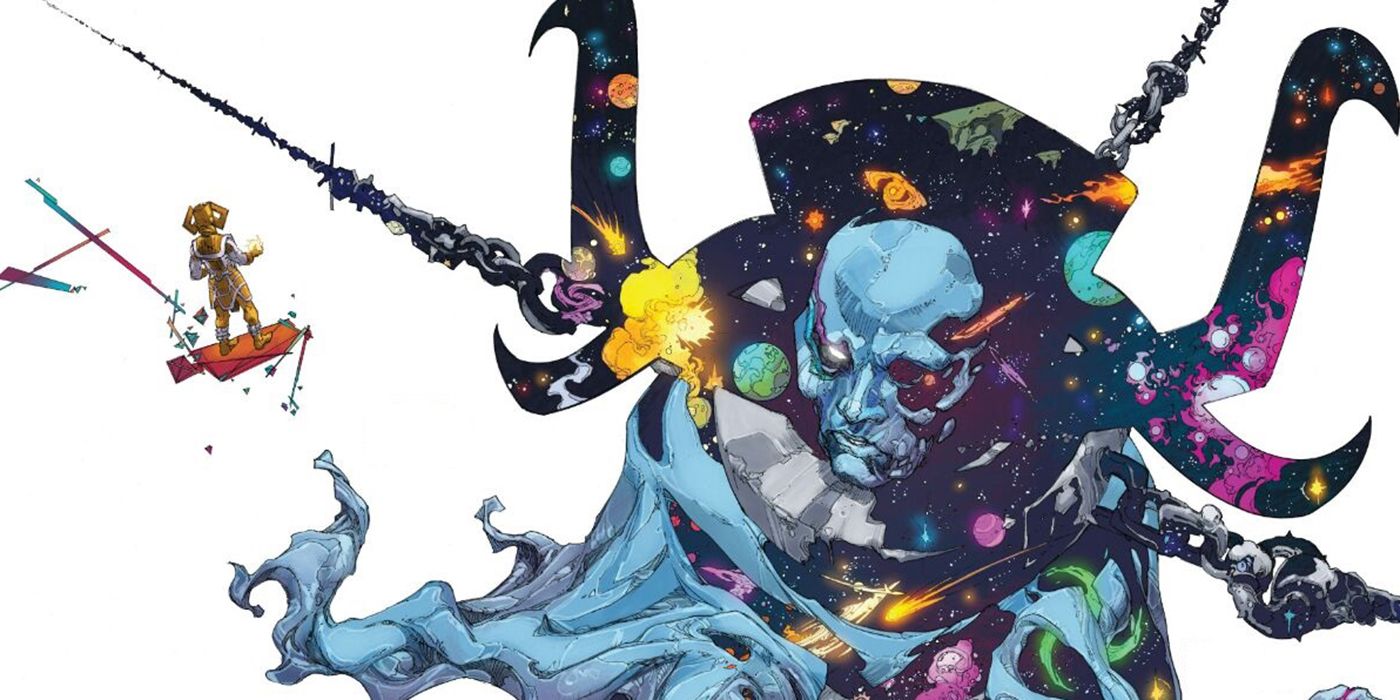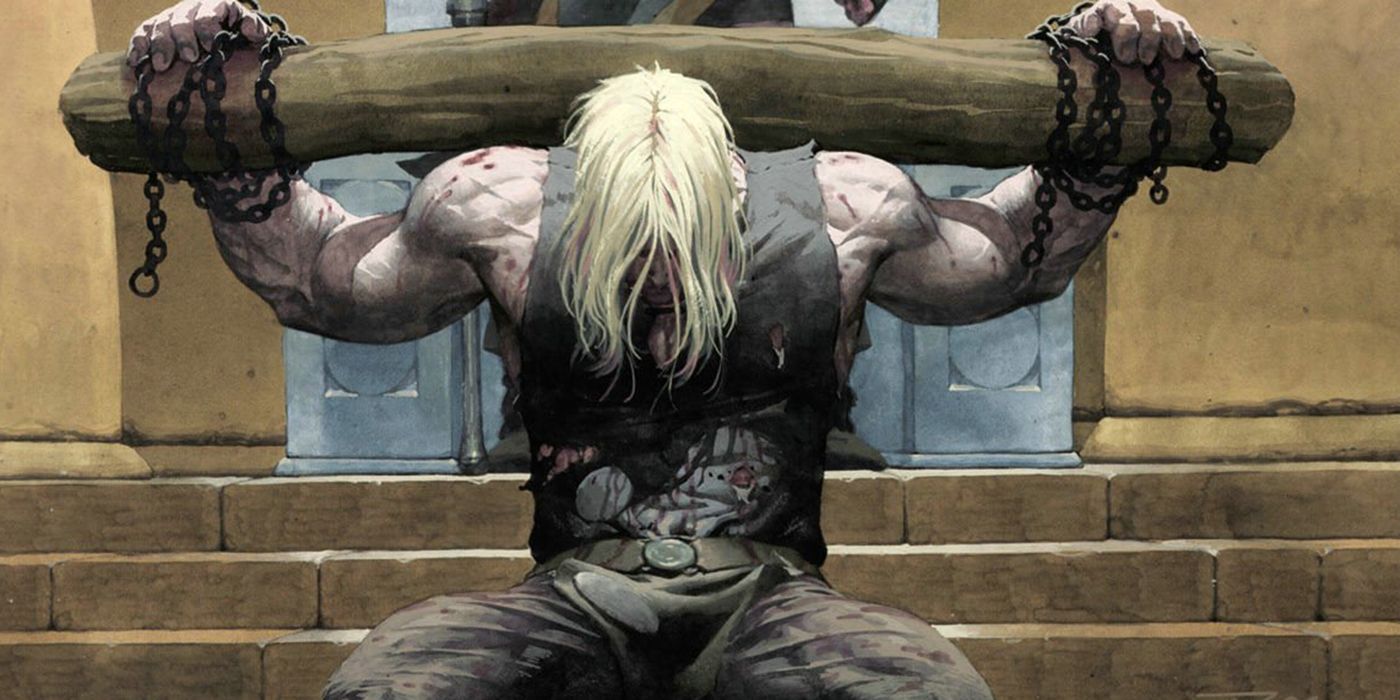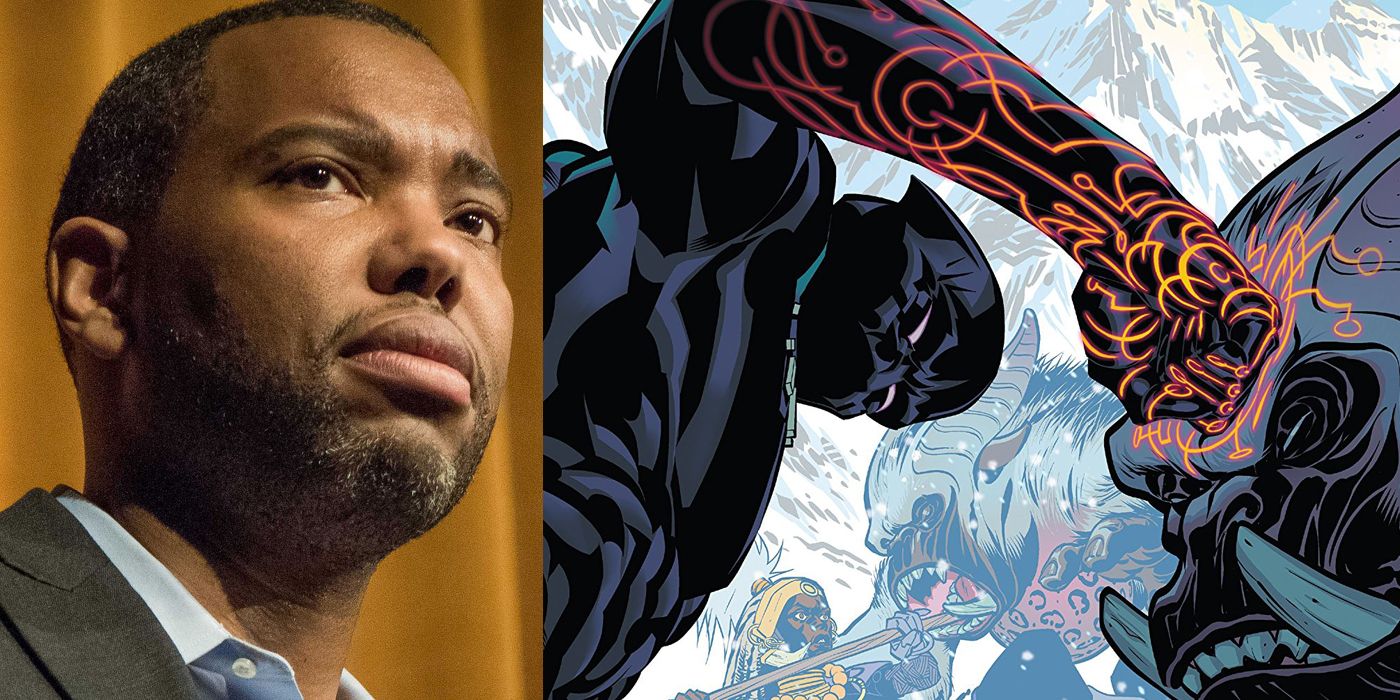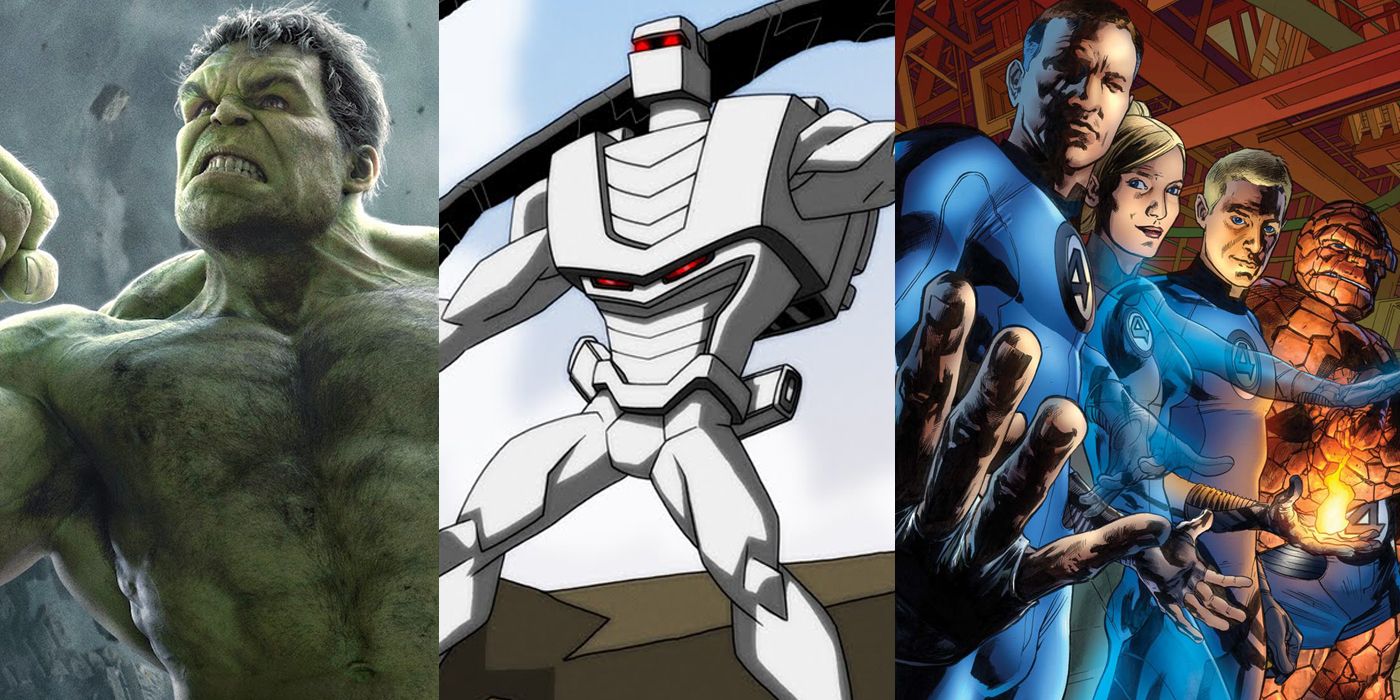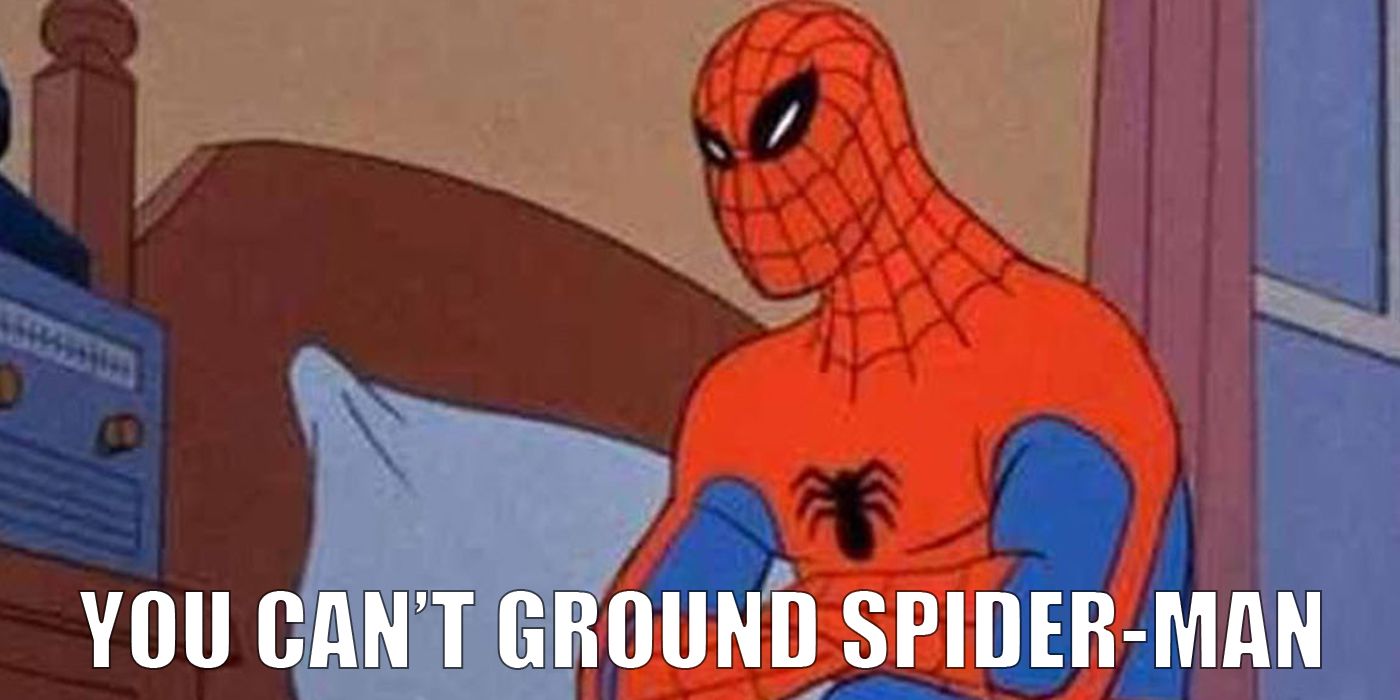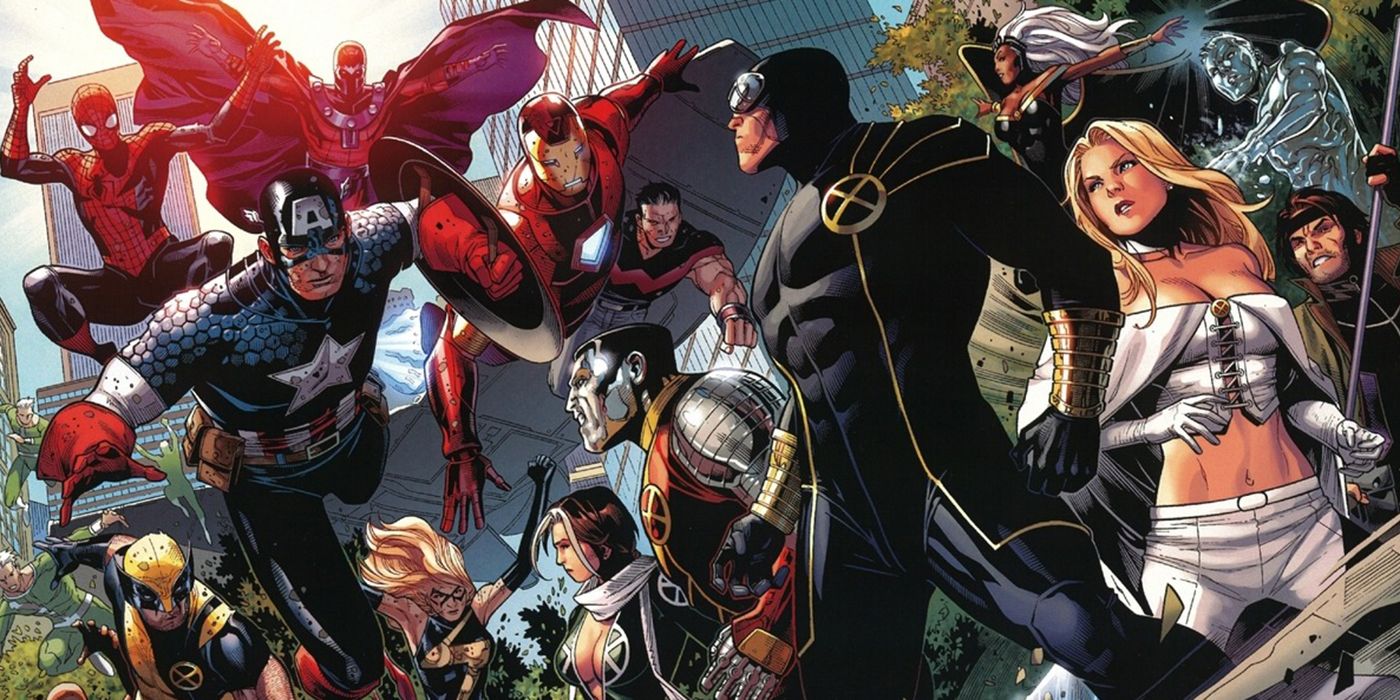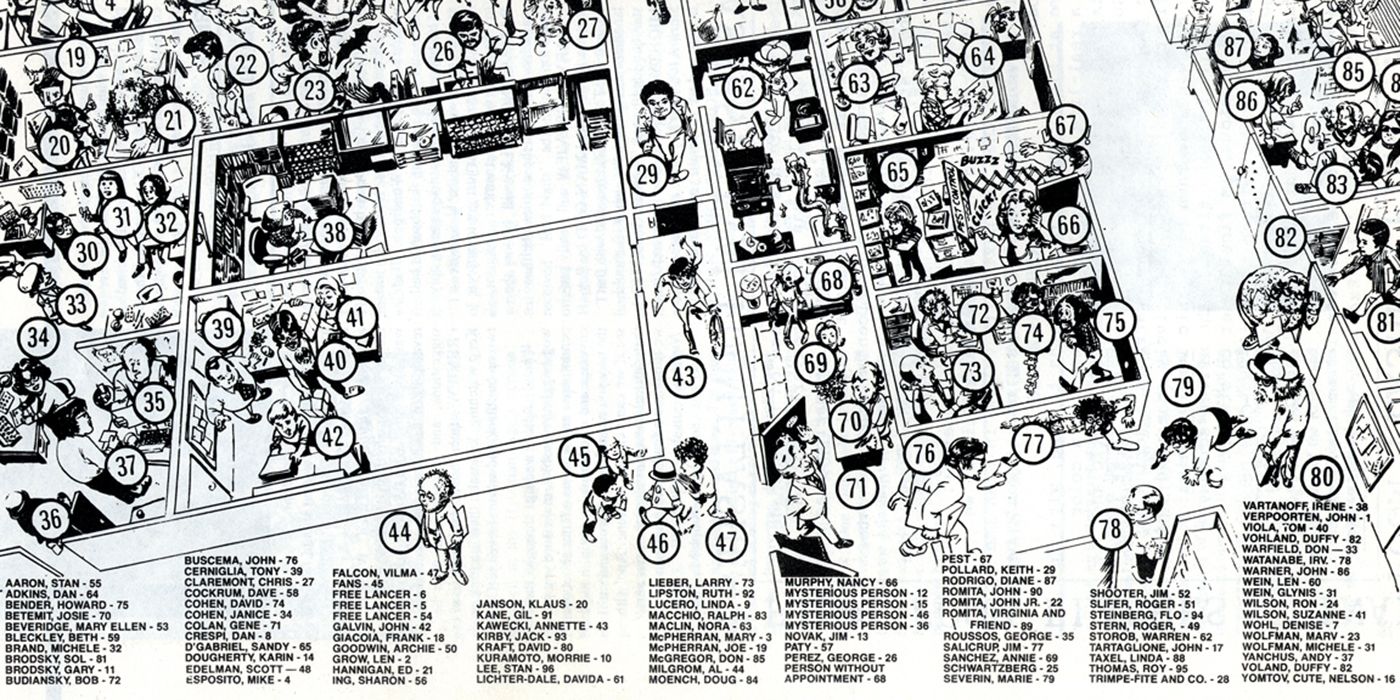Does Marvel Comics, with its hundreds of iconic characters in its roster, billions of dollars in toy sales and movie franchises, have a formula for success? In the 2016 film The Founder, we learned that the success of the McDonald's franchise came from the consistency and quality of its product. Apple Computers is another example of a brand with high standards that has immediate brand recognition based on its design and marketing. Consistency is key to making sure people trust what you're making and ensure return customers.
So, what's Marvel's formula? The company has a variety of rules put in place for writers and artists to ensure quality. But wait, we had mentioned McDonald's and Apple as being successful franchises, but we've all at one point or another gotten a Big Mac that didn't look like the packaging or had a bad computer crash, so success isn't guaranteed. In fact, some of the rules that creatives at Marvel have to follow could be considered downright ridiculous. How do the movies change what happens in the comics? What legalities prevent writers from using certain characters? We answer these questions and more as we look at 15 baffling rules Marvel writers and artists have to follow.
15 THE MARVEL METHOD
How did Stan Lee write so much in his heyday? A good chunk of it was due to the "Marvel Method," a storytelling process that favored the artist as the storyteller. Instead of the writer providing a script with specific moments designed to be in specific frames, a writer would provide an outline of the story that the artist would then visualize. The finished work would then make its way back to the writer, who would add in the dialogue. How well did this work?
It really depended on the relationship between the writer and the artist, and this also meant the artist needed to have a strong understanding of visual storytelling. As the story goes, Lee gave Kirby the loose episode description "The Fantastic Four fights God" and from that note Galactus was born. Ironically, Marvel in recent years uses this means of storytelling less but DC is trying to embrace it more.
14 MOVIE INFLUENCE
Having a cohesive cinematic universe based on comics is no easy task. Marvel seems to have gotten the hang of it and DC is still trying to find the right formula. Let's face it, though, some of the cooler elements in comics just don't translate well on the big screen. Iron Man's suit in the comics had fake muscles seemingly chiseled into his armor, and the X-Men mostly wore spandex. None of those things seemed to have made it to the big screen. In fact, the opposite happened.
Due to the popularity of the Fury from the Marvel Cinematic Universe, the current version of Nick looks more like Samuel L. Jackson and less like David Hasselhoff. For a brief period, the Arc Reactor embedded in the chest of Robert Downey, Jr. also found its way to his comic book counterpart. Writers and artists had to make changes to accommodate what was happening on the big screen.
13 NO MORE MUTANTS
In 2005, Marvel ran the crossover House of M, in which reality was altered by the Scarlet Witch and the world became controlled by mutants, with Magneto and his family in charge. Eventually the illusion of everything is dismantled, and the Scarlet Witch alters reality once more, but instead declares "No more mutants," which reverts reality back to normal but finds the bulk of mutantkind depowered.
Disney intends to buy 21st Century Fox for $52.4 billion, but until the ink is dry, Marvel still doesn't have the cinematic rights to the X-Men; the company still technically can't even use the word "mutant" on the big screen. Back in 2014, Chris Claremont said that while writing for the X-Men, he was told he couldn't make any new mutant characters because any new X-Men would become the cinematic property of Fox. This may be the real reason why we have "no more mutants," making economics more dangerous than Wanda Maximoff.
12 BULLPENS AND TRASHCANS
The first motion picture was screened around 1895 to an audience of 200 people. It was made by Auguste and Louis Lumiere, and although they pioneered filmmaking, their thoughts were that cinema was an invention without a future. How could they possibly know that over 100 years later, cinema would be an essential tool that humans would use to entertain and educate each other?
The same could be said about comic books. Artists that were submitting work to Marvel before the 1960s would have their originals thrown out after the comic went to print. Who was to know that these drawings and sketches today would be astonishingly valuable? Marvel eventually began to store artists' work in a warehouse in the 1970s, but there was poor organization of the work, and theft occurred with frequency.
11 HOUSE OF M(OUSE)
Next time you go to Disney, observe how the staff points directions to people; they will always point with two fingers instead of one. Women must have short, unpainted nails and employees are referred to as cast members. Disney employees have very specific rules that they have to go by and even Disney characters have restrictions on what they can and can't do. So how many of these rules applied to Marvel once they were bought by the House of Mouse?
Although there are some clear exceptions, Disney had some rules for what could happen in their movies. Because it's a family property, Disney wanted characters to avoid smoking. It also didn't want to see any beheadings or impalements. It feels like those in charge wrote all of these restrictions with Wolverine specifically in mind. It's hard to tell if writers are forced to do these things, but do you recall the last time you saw Nick Fury or Logan smoking?
10 CREATE YOUR OWN (KIND OF)
Marvel announced that in early 2018, it would provide a platform created by TapTap Comics where fans could use its characters to write, create, and share their own stories. The platform promises easy to use templates in which people can pose and give dialogue to their favorite Marvel characters. Finally we can make that Vision/Iron Fist rom-com we've been dreaming of! Not so fast, you have some rules to abide by.
Let's not forget that Marvel is allowing you to play with its toys, so its characters mean its rules, and because Marvel is owned by Disney you better believe there are family-friendly rules to follow. For example, you can't create media that involves the characters doing non-PG related things such as gambling or taking any actions considered sexually suggestive. Oh, and no amusement parks, unless they are owned/operated by Disney. Now go have fun!
9 REBOOTS, REBOOTS, REBOOTS
Spider-Man starring Tobey Maguire made its debut in 2002, and as of 2018 the franchise has been rebooted twice. When it comes to Marvel Comics, it feels like a reboot happens almost every year, but we're going to dive into semantics here because we have to figure out if we're talking about reboots or relaunches. When something is relaunched, often you'll see re-numberings and changes in creative staff. A reboot restructures continuity.
Either way, it can't be easy for a writer or an artist at Marvel to write plot lines and develop characters if there is going to be a redesign of the book's direction every other year, but it certainly feels like that happens at Marvel recently starting with the 2014 crossover event Time Runs Out, followed by Secret Wars, Marvel Legacy and Fresh Start.
8 NO VAMPIRES, ZOMBIES, OR WEREWOLVES
When learning about the history of comic books, it's inevitable that you'll come across the name Dr. Frederic Wertham. He wrote a book in 1954 entitled The Seduction of The Innocent. It infamously said that comics caused bad behavior in kids. This, in turn, helped lead to the creation of the Comics Code Authority, a code of conduct Marvel followed until 2001.
The Comics Code Authority laid down some rules for comics about the words, scenarios and characters that could be used. Writers at Marvel had to refrain from scenes of excessive violence, using the word "crime" as well as not using such creatures as vampires, zombies or werewolves as characters. Many additional artists had to be brought in to "clean up" the artwork of the main artist due to it being too potentially racy. Eventually Marvel ditched the Code in favor of its own ratings system.
7 FOREVER CONTRACTS
Perpetuity is one of those fancy legal terms that you need to look out for. It basically means forever, so if you see that written on a contract, it means that time would have to reset and the universe would have to reboot for the contract to end. So, who would want to sign a contract where what you make is owned by someone else forever? (Talk about an infinity war!)
Keep in mind no one could have predicted that comics would be a multi-billion dollar industry, and those freelancing at Marvel comics in the late 1970s had to deal with this dilemma. To work with the company at that time, you needed to sign a contract that said Marvel would own any work that you created forever. Rules like this contributed to the artist and writer exodus that formed Image Comics in 1992.
6 EXCLUSIVITY CONTRACTS
Ever stress out over your status update with someone on Facebook? Is your relationship complicated? Are you even in a relationship? If commitments like that cause you anxiety, then working for Marvel may add to your sleepless nights. To prevent writers and artists from supplying work to the competition, Marvel can try and rope them into exclusivity contracts, which means they can only create for Marvel.
To be fair, other companies are known for doing this as well. It just seems with Disney owning Marvel and 21st Century Fox, isn't there enough room for people to write and draw whatever they want? With Brian Michael Bendis' recent jump to DC to work on Superman, time will tell what Marvel will do to retain its writers and artists: will it incentivize them staying at Marvel or will it merely tighten the reins with more restrictive contracts?
5 FAMOUS BEFORE BEING FAMOUS
Comic Cons are not only great opportunities to meet your favorite writers and artists, they may be a cool opportunity to show off your work and see if you can get a dream job in the comic book industry. There are also plenty of YouTube videos that give you pointers on what kind of submissions you have to submit. Although there are some differences in strategies, there are some consistent truths.
For an artist, it's possible to be an unknown and break immediately into the industry. In fact, Marvel has stated that it's always looking for young, fresh artists. When it comes to writers, the company is looking for people with previous experience under their belt. Ta-Nehisi Coates, for example, was a journalist and author before becoming the writer for Black Panther. Other writers began at much smaller comic companies and had already published before approaching Marvel.
4 LEGAL RESTRICTIONS
Believe it or not, Marvel went bankrupt back in 1996. It fired about one-third of its employees, sold the movie rights of its characters to various companies, and owed a crazy amount of debt to, of all companies, Disney. Slowly but surely, Marvel climbed back on top but there still are some obstacles that even Marvel hasn't been able to web-swing across.
If you're sad that you haven't seen The Fantastic Four in a while, so are we. We're also going old school and saying we miss Rom: Spaceknight (at least before it was more recently snatched up by IDW). So, did James Gunn, who wanted to include the Galadorian Spaceknight in Guardians of the Galaxy Vol.2, but the movie and toy rights to the character are owned by Paramount. Universal owned the movie rights to Hulk, and Fox owned The Fantastic Four and X-Men, so artists and writers have restrictions of what characters can be used, when they can be used, and in what medium.
3 CHARACTER RESTRICTIONS
Although the protagonist is the hero of a story, they're often the character with the most potential for change. Heroes learn from their mistakes and grow, but if growth is at the expense of a character changing so much that they're no longer recognizable, then you've got a problem. So what can you do when dealing with iconic Marvel characters like Spider-Man and Iron Man? How much can they change over the years without fans crying foul?
Fans had no problems when Iron Man changed armor, but Marvel keeps an eye on how their characters are branded. When actor/comedian Paul Scheer wrote Deadpool/Spider-Man #12, he wanted Spider-Man to drink a beer, and Marvel Powers That Be said absolutely no. Keep in mind merchandising for Spider-Man in 2014 brought Marvel around $1.3 billion in revenue, so they're going to have tight control over their properties.
2 FORCED CROSSOVERS
Avengers: Infinity War is a big deal because for the first time we get to see pretty much every main character in the Marvel Universe share a screen together. However, for comics, it's just another day at the office. It's not like you're reliant on the schedules of actors to determine who can appear in what book. So what's wrong with having a more the merrier attitude when crafting a comic book?
For starters, crossovers are created by Marvel editors opposed to the writers of the book. Peter David eventually left writing for X-Factor because when crossovers were introduced, he couldn't pursue the plot lines he had set up in previous episodes. Artists also now have to draw additional characters they're not familiar with in styles they're not comfortable with. This can also lead to rushed, sloppy artwork or delays altogether for the book.
1 NO CROSSOVERS
What does Marvel Comics Editor In Chief C.B. Cebulski have in common with comic book writer Akira Yoshida? We'll come back to that question in a second and in the meantime look at Marvel's policy of Marvel staffers prevented from writing or drawing comic books. This was to ensure fairness and make sure there were enough checks and balances so no one person could submit work without it being unfairly approved or not vetted properly. So how does Cebulski know Yoshida? They're the same person.
To circumvent the restriction, while Cebulski was an editor at Marvel wrote under the name Akira Yoshida. Cebulski did at one point live in Japan and was knowledgable about the culture, but it still seemed like an odd and inappropriate identity to take on. Given the fact that he's now Editor In Chief, time will tell if he'll allow editors to write and draw, or if he'll enforce the rules the way that Joe Quesada did when he held the position.

